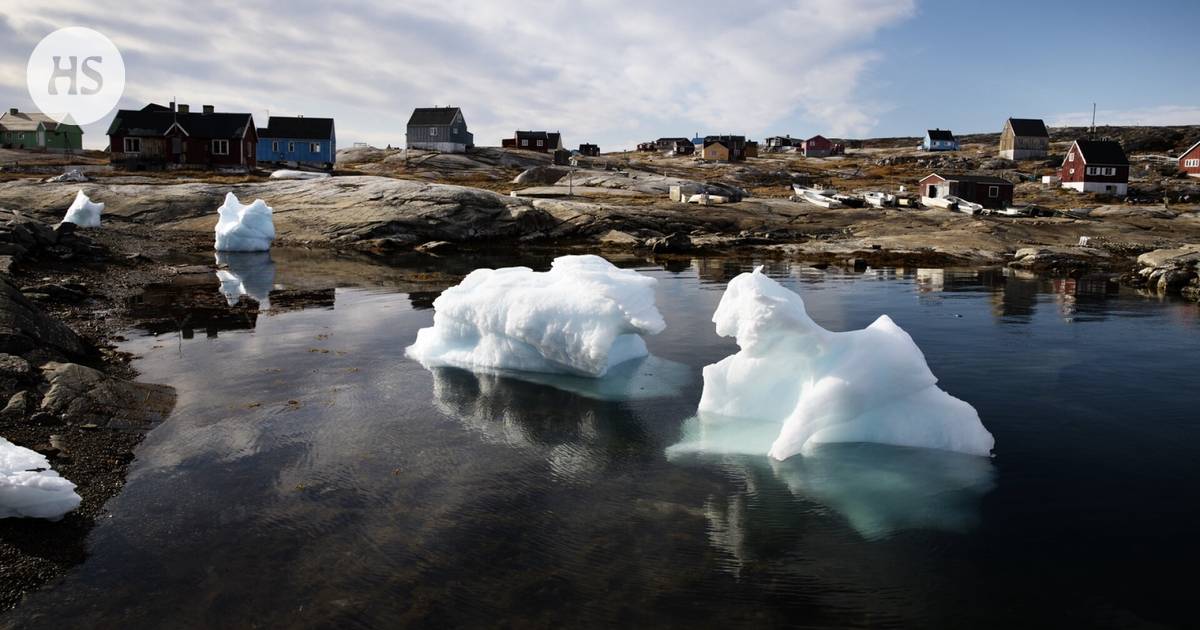The summary is made by artificial intelligence and checked by a human.
The Atlantic seawater cycle threatens to be disrupted this century, scientists warn.
A disruption would have a devastating effect on the Nordic countries, especially agriculture.
Studies show that the cycle is close to the first tipping point.
Atlantic a key ocean water cycle is at risk of disruption this century, with potentially serious consequences. This is what a wide group of climate and ocean researchers warn in his open letter To the Nordic Council of Ministers.
The threat of disruption of the sea water cycle is real, but it has not been understood, the researchers write. The threat has been frankly underestimated.
The circulation transports warm water to the north and warms the northern corners. Its disruption would have a “disastrous and irreversible” effect on the Nordic countries in particular. Farming in the northeastern corners of Europe would be at risk.
“A high-risk event would be a stoppage of circulation. If it stops, which is only an extreme threat, the winter temperature would drop by dozens of degrees. We would be like in Siberia”, says the oceanographer Petteri Uotila from the University of Helsinki.
It’s about is from the great south-north circulation of sea water in the Atlantic. It has warm water on the surface and cooler water in the depths. Scientists use the abbreviation AMOC (Atlantic Meridional Overturning Circulation) for the layer.
Also The Gulf Stream, which originates from the Gulf of Mexico and extends northward, connects to this so-called thermal salt water cycle. However, the AMOC is a much broader phenomenon, as its circulation originates from the southern Atlantic.
The warm surface water cools at the end of a long cycle in the northern sea areas and sinks to the bottom in the Labrador Sea, the Irminger Sea and the Greenland Sea. These sea areas are south and east of Greenland. The cooled water returns to the south.
In this way, the great circulation of sea water between the south and the north of the Atlantic brings warm water from the south to the north. The cooled water returns in the depths.
Last year Helsingin Sanomat reported, that of the Danes Peter Ditlevsenin and Susanne Ditlevsenin according to the study, the sea current carrying warm water to Europe could be disrupted with fatal consequences between 2025 and 2095.
At the beginning of this year, research In the journal Science confirmed the same for his part. Based on “early warning signs”, the AMOC is heading towards the so-called tipping point, after which the consequences of warming will not be recovered.
Uotila is one of the signatories of the letter sent less than a week ago. According to him, the initiative came from a German From Stefan Ramstorfwho is a climate and marine scientist at the University of Potsdam.
The incentive is the fact that the earth has warmed more than 1.5 degrees since pre-industrial times.
“The lower limit at which the risk of disruption of the AMOC cycle is calculated to increase is 1.5 degrees,” says Uotila.
At the beginning of the year it was reported that for the first time in the previous year, the earth was more than 1.5 degrees warmeri than in pre-industrial times. It was written into the Paris climate agreement that states should strive to limit warming to less than 1.5 degrees.
According to the letter, the world is moving towards a warming of more than 2.5 degrees at the current rate.
”Risk is significant, but we don’t know if the worst will happen”, Uotila reminds – that is, Finland is not immediately turning into Siberia.
However, there are studies that indicate that the great circulation between the south and the north of the Atlantic is in greater danger than the Intergovernmental Panel on Climate Change (IPCC) estimates in 2021. At that time, the IPCC estimates that the risk of disturbance of the circulation before the year 2100 is only “medium confidence”.
“The threat may not be the biggest and most urgent yet. On the other hand, it’s good to be aware of the risk and prepare for the changes it causes,” Uotila reflects.
